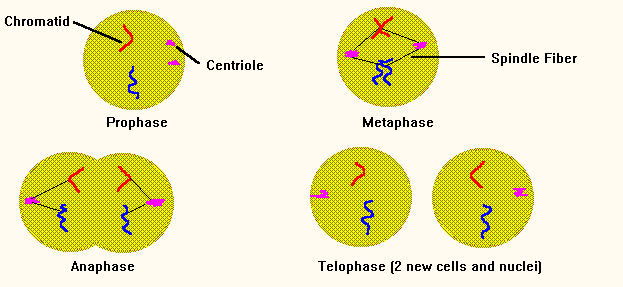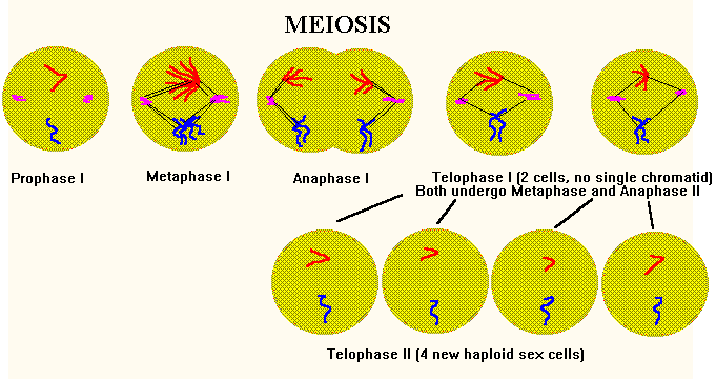MEIOSIS VS. MITOSIS
Every day, our skin cells and other somatic (body) cells undergo division to replenish the dying cells. When this happens, the new cell will have the same amount of chromosomes and organelles. This process is called mitosis. A diagram of this event is given.

The four phases include:
This process occurs in all diploid (2n) cells, except for the sex cells, which will produce gametes for reproductive purposes. The process for the production of gametes is called meiosis.

In this process, there are seven stages:
In the male, all four of the 1n (haploid) cells will become sperm. However, in the female, only one cell will become an egg and the rest will be polar bodies.
- Return to Genetic Diseases
- Return to Background of Genetics Menu
- Return to Main Menu
|
|
© 2003-2026:
USA · USDA · NRPSP8 · Program to Accelerate Animal Genomics Applications.
|
||